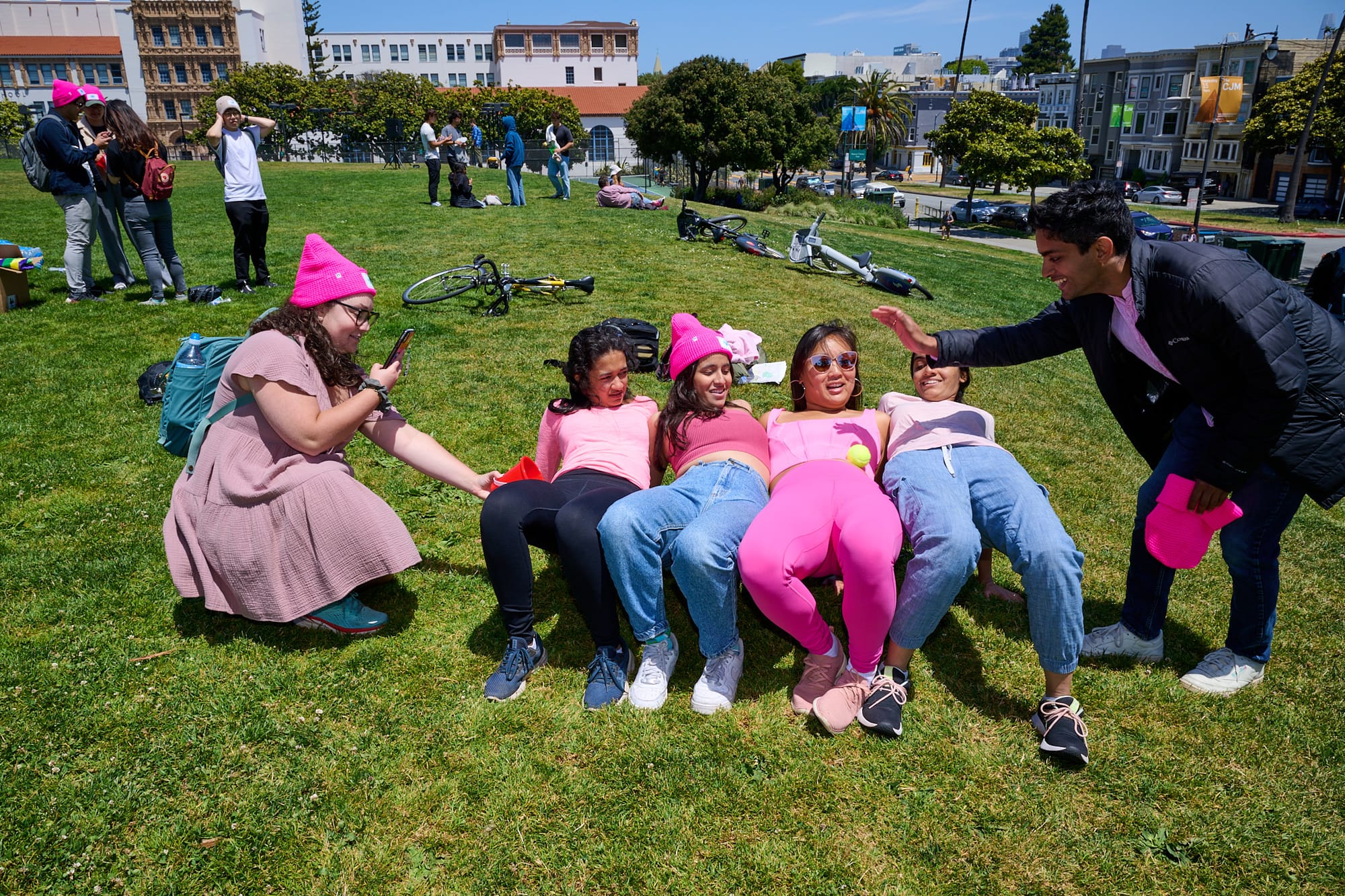Team Building Game Design: A Journey to Creating Successful Corporate Events

Have you ever had the feeling of "I never thought I'd be doing this in life"? That's exactly how I feel about becoming a corporate scavenger hunt designer. And it's the best job in the world. A career in designing fun?? What a cool job description. My name's Gabe and you might say I'm a 'Fungineer' (no one says this). But how does one get into designing professional team-building events?
Looking back with 20/20 hindsight, my path to becoming a professional designer of fun wasn't straight, but the dots all connect to bring me to where I am today: creating high-quality scavenger hunt and escape room team-building experiences with Handstand.
Designing Scavenger Hunts and Escape Rooms
When I'm designing these experiences for company offsites and team-building events, my goal is to create riddles and puzzles that offer a balance of work and reward. They must be challenging enough to require collaboration, teamwork, and out-of-the-box thinking. Yet, they also need to be attainable so that players can experience a sense of accomplishment and celebration (instead of frustration).
It's a delicate balance. The sweet spot has taken time to fine-tune and truly master.
What drives me
What truly drives me to continue leveling up my game design skills is seeing teams come together, stretch their abstract thinking, and genuinely have a good time. Introducing you to the most interesting spots around your city through tricky scavenger hunt riddles is also a bonus!
But how exactly did I get to this point? How does one become a professional corporate scavenger hunt and escape room designer?
Back to the Beginning: My First D&D Puzzle
My game design mastery journey began with Dungeons & Dragons.
A friend needed a puzzle to serve as a door lock for his D&D campaign, so I created something special: four concentric stone rings (okay, they were cardboard) each contained a line of poetry, forming a riddle. Players had to identify a special word in each ring and align them to open the door.
Watching my friends tackle this puzzle was transformative. Their initial confusion gave way to excitement. Then wonder. And finally, triumph! Hearing, "Wow, you made this? That was awesome!" was it.
I was hooked.
Learning Through Creation: The Early Board Game Years
Early on, my first attempts at game design were experimental and educational. My first board game, "Liege of the Pit," still sits proudly on my shelf as a reminder that everyone starts somewhere. It's like that 2 AM college meal – not winning any awards, but it did the job!
My second game, "Adventurers Wanted," started as a creative challenge: could I design a board game using a Rubik's Cube as a strategic piece? While I didn't ship the final product, the concept still intrigues me.
These early attempts taught me valuable lessons about game mechanics and player engagement.
Growing as a Game Designer: The Sweet Spot
When COVID-19 hit, I discovered a new creative outlet: crossword puzzles. My favorite theme that I submitted to the New York Times was a play on "Drastic times call for drastic measures," featuring quirky units of measurement like an "Arm's Length": A unit of emotional distance (approximately 2 cubits).
In pumping out crossword puzzles, I was able to fine-tune my wordplay writing and expand my riddle repertoire. Then came pub trivia.
Trivia became my testing ground for understanding what makes team knowledge activities fun. I concluded the sweet spot lies in:
Creating tension through challenge and collaboration, especially when answers feel just out of reach, is the best strategy.
I've been able to incorporate this strategy and the years of game-making lessons into many games; a marathon game show, large-scale scavenger hunts, escape rooms, and my most recent game: Ultimate Allstar - an ultimate frisbee board game.
Sure enough, while testing an early version of Ultimate Allstar, the person I was playing with asked, “Can we play again?"
BINGO!
Team Handstand: Designing Fun Team-Building Activities
Fast forward, and a casual conversation about my game design expertise led to an introduction that changed everything.
After touring one of Handstand's pop-up escape rooms, Jazz Heist, and talking shop with their designers. I was blown away by the level of intricacy and attention to detail that went into the escape room experience. I knew I'd found my people.
Now, I design intricate riddles and puzzles for Handstand's engaging team-building experiences. Whether I'm writing riddles for corporate scavenger hunts, designing The SF Hunt (the largest scavenger hunt in San Francisco), or orchestrating the puzzles embedded in a pop-up escape room, I’m using everything I’ve learned so far to create high quality, engaging, and fun company events.
Why This Matters
At Handstand, we don't just provide "Company Team-Building Activities.” We deliver custom experiences that unite people, challenge you to think differently, and most importantly, give you a way to have fun!
Whether you're planning an offsite or looking to install an escape room in your office, we know how to create the perfect blend of challenge and enjoyment.
Ready to bring some fun to your corporate team? Reach out to us today. I’ll be ready and waiting to use my game design expertise to create an amazing event for you.


